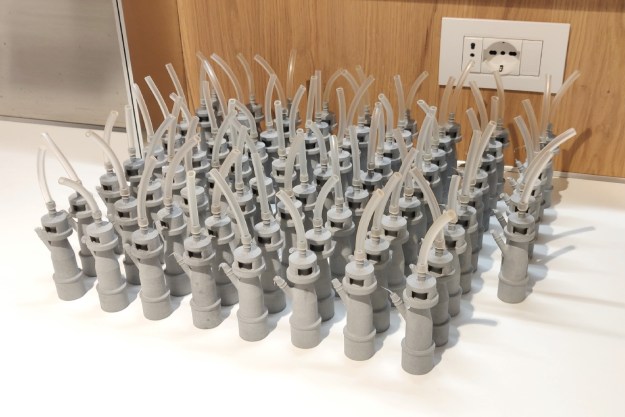Remember 3Doodler — the world’s first 3D-printing pen that took Kickstarter by storm a little over a year ago? By using a special, quick-hardening filament, it allowed users to draw free-form three-dimensional objects by hand, instead of drawing out designs on a computer and using a printer to bring them to life. It was a groundbreaking idea, and gave people a new way to create things, but it was also somewhat squirrely and imprecise. For all of it’s creative potential, it was more of a fun toy than a serious design tool.
Now, a U.K. startup by the name of Lix is building a more precise version of this concept with professional users (designers, artists, architects, and the like) in mind, and just like 3Doodler before it, the device is blowing up on Kickstarter. Within its first two hours of launching yesterday, the Lix Pen crushed its £30K funding goal. As of this writing (roughly 24 hours after launch), it’s sitting pretty at £170K.

Technically speaking, the Lix Pen works almost exactly the way 3Doodler does. It’s essentially a handheld extruder that you load with a special ABS or PLA filament, and has two buttons that allow you to control the rate at which the material comes out. This gives users the ability to draw at different speeds, and create lines of varying thickness.
The difference between the two, however, is that the Lix Pen is considerably slimmer. Instead of looking like an oversized belicoso cigar, Lix Pen is sleek, slender, and constructed from lightweight aluminum rather than plastic. Additionally, it’s designed to work with a USB power cord, so even if you’re not near an outlet, you can plug the device into a laptop or other portable power source.
At this point the pen is just a prototype, but the Lix team is on the verge of finalizing the design, and plans to have it ready for mass production within the next couple months. If everything goes smoothly, they’re hoping to ship the first production models to backers as early as September of this year. All the “early bird” slots have already been snagged up, but you can still lock down a Lix Pen for $135 if you back the project now.
Head over to Kickstarter for more info.
Editors' Recommendations
- 3DMakerpro’s Seal is a pocket-sized scanner to make next-gen precision 3D prints
- Need a last-minute Halloween costume? Check out these 3D-printable getups
- The future of making stuff: Inside the evolution of 3D printing with Formlabs
- Father’s Day Gift Idea: These cheap 3D printers are on sale for less than $300
- 3D printing lets hospitals make ventilator substitutes with common equipment




